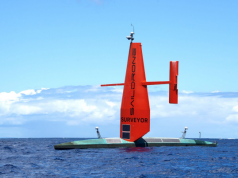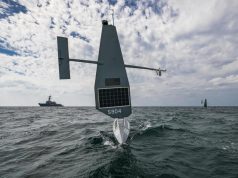The US Coast Guard Research and Development Center will work with local Coast Guard units to test and evaluate unmanned surface vehicles off the south shore of Oahu.
The testing will take place between October 7 and November 5 and will see a total of three companies delivering their systems for testing, according to the service.
As revealed the systems will be supplied by Saildrone and Spatial Integration Systems, in addition to a USCG owned autonomous research vessel made by Metal Shark.
This evaluation will examine each vessels’ ability to provide persistent maritime domain awareness, especially in remote areas of the oceans.
While potentially applicable to many Coast Guard missions, there is potential these technologies will help enable the Coast Guard to better protect critical natural living marine resources from illegal, unreported, and unregulated(IUU) fishing and other illicit activities.
The saildrone ASV is a wind and solar-powered autonomous surface vehicle that offers ocean data collection at scale. They enable oceanic, atmospheric, and biogeochemical observations over large areas of the ocean and extended periods of time – up to 12 months at a time.
Spatial Integration Systems offers a range of unmanned systems but the coast guard did not specify which system or systems would be tested. In addition to conventional RHIBs fitted with autonomy enhancements for swarm operations, the company has also been working with MARTAC and their Man-Portable Tactical Autonomous System (MANTAS) USV to provide intelligent autonomous control to their vessels.
Finally, Metal Shark and Boston-based autonomous technology developer Sea Machines are supplying an autonomous test vessel that was ordered by the coast guard last month.
The welded-aluminum 29 Defiant craft is equipped with Sea Machines SM300 autonomous-command and remote-helm technology, which enable it transit autonomy, collaborative autonomy, active ride control and collision avoidance, and remote control vessel monitoring.



























